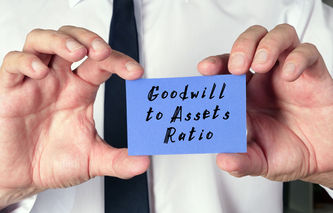Definition
The interest expense to debt ratio allows analysts to estimate the rate of interest a company is paying on their outstanding debt. Analysts can use the interest expense to debt ratio to benchmark the company's cost to borrow against its competitors or peer group.
Calculation
Interest Expense to Debt Ratio = Interest Expense / (Long Term Debt + Short Term Debt)
Note: A company's interest expense can be found on its income statement, while long and short-term debts appear on its balance sheet. These financial statements will be part of the company's Form 10-K filing with the Securities and Exchange Commission.
Explanation
Large corporations raise capital in two ways: they can issue shares of stock (equity) or they can borrow money from lenders (debt). Creditors are compensated by borrowers for the use of the money in addition to the risk of non-payment. Generally, the rate of interest charged will increase as the risk of non-payment increases.
Calculating a company's interest expense to debt ratio allows analysts to benchmark the rate of interest paid against competitors as well as peers. Companies that are experiencing financial distress will have a higher interest expense to debt ratio. Since the debt appearing on a balance sheet of the company is a historical account of the company's need to borrow, it's advisable to look for patterns in this metric over time.
Example
Company A's industry was hit hard by a near term reduction in sales due to an economic recession. Industry analysts were concerned about Company A's financial health and wanted to understand if Company A's cost to borrow is increasing over time.
The information in the table below was pulled from Company A's Form 10-K filings over the past several years. The analyst also pulled the same information for twenty other companies to use as an industry benchmark:
Year 1 | Year 2 | Year 3 | Year 4 | Year 5 | |
Interest Expense | $2,498,746 | $3,171,485 | $5,201,235 | $5,291,305 | $5,143,641 |
Long and Short Term Debt | $48,052,800 | $52,858,080 | $63,429,696 | $61,526,805 | $58,450,465 |
Interest Expense to Debt Ratio | 5.2% | 6.0% | 8.2% | 8.6% | 8.8% |
Industry Benchmark | 5.5% | 6.6% | 7.0% | 7.1% | 7.1% |
Based on this information, the analyst concluded Company A is under financial distress. The cost to borrow appears to have increased significantly in Year 3 and continues through Year 5. The industry benchmark information also demonstrates that while the cost to borrow has been increasing, Company A's ratio is significantly higher than expected.




